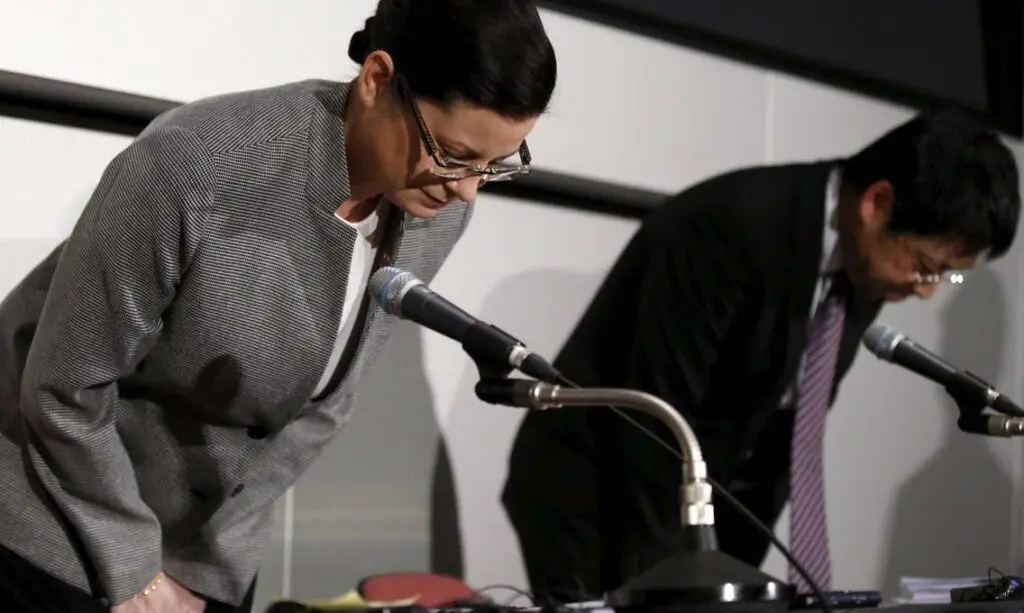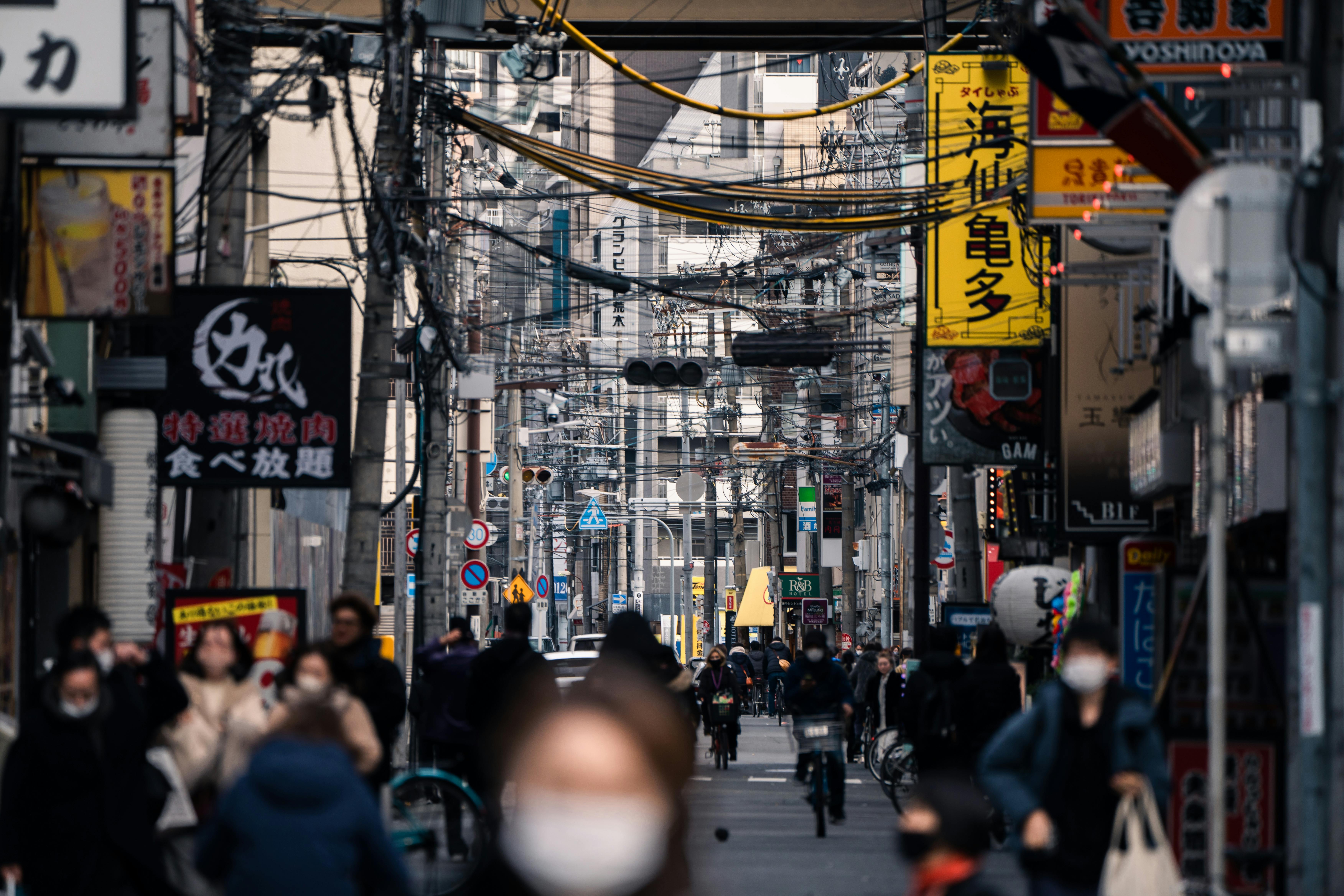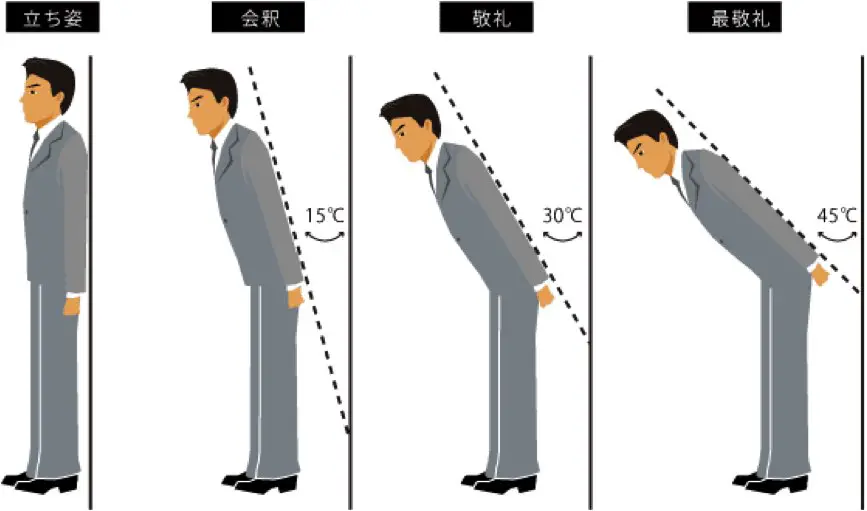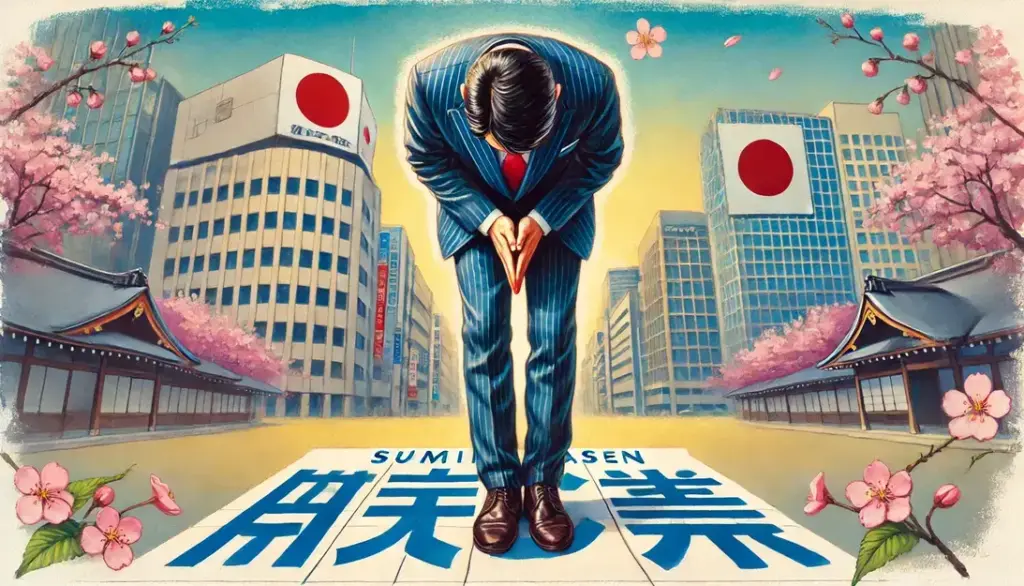In Japan, a single word, “Sumimasen,” carries more weight than it seems. It means “I’m sorry,” “Excuse me,” or even “Thank you,” depending on how and when it’s used. It’s more than just words—it’s a key part of Japanese culture and their approach to politeness. Whether you’re asking for directions, apologizing for bumping into someone, or showing gratitude, “Sumimasen” fits perfectly. Learning its uses can help you navigate Japan’s society respectfully and easily.
What Does ‘Sumimasen’ Mean?
You’ll notice that words often carry deep cultural significance when you explore the Japanese language. One such word, Sumimasen, is a prime example. At first glance, it may seem like just another phrase. But this word speaks volumes about respect, connection, and societal norms in Japan. Let’s uncover how this simple word reflects Japan’s emphasis on politeness and how to use it in everyday interactions.

Cultural Importance of Words in Japan
In Japan, communication often goes beyond words. Language reflects respect, intention, and understanding of one’s surroundings. Take Sumimasen, for example. This word underscores the importance of social harmony, a core aspect of Japanese culture.
Politeness in Japanese society is not optional—it’s woven into every interaction, from casual chats to business meetings. Phrases like Sumimasen carry a sense of humility and acknowledgment of others. Using Sumimasen shows you’re aware of someone else’s effort, space, or feelings. It’s not just about saying sorry; it’s about maintaining a mutual sense of respect.
For example, imagine accidentally brushing against someone on a busy Tokyo train. A quick Sumimasen not only smooths over the moment but also maintains the calm, collective atmosphere cherished in Japanese society. Language here functions like a social lubricant, keeping interactions effortless and respectful.
Want to dive deeper into how Japanese words shape cultural values? Check this out: Japanese Culture and the Art of Words.
Primary Meanings and Basic Usage
So, what does Sumimasen actually mean? In simplest terms, it’s a multi-functional word with three primary uses:
- Apology: Most commonly, it means “I’m sorry.” A heartfelt Sumimasen can express regret, from bumping into someone to being late for a meeting.
- Thank You: Surprisingly, Sumimasen can also show gratitude. It’s like saying, “I’m sorry for the trouble, but thank you.” This subtle blend of apology and appreciation is unique to Japanese culture.
- Getting Attention: Need to catch a waiter’s attention at a restaurant? Just say Sumimasen, and you’ll be helped without disrupting the group.
Consider these examples:
- A simple Sumimasen works like “Excuse me” when you’re weaving through a crowded street.
- When you’re handed a gift, responding with Sumimasen conveys a mix of gratitude and humility.
Learn more about its versatility here: Sumimasen: 5 Meanings in the Japanese Language – Guidable.
What’s fascinating is how one word can shift roles depending on tone, context, and intention. Whether you’re expressing regret, gratitude, or simply trying to be polite, Sumimasen is your go-to phrase.
By mastering this word, you’re not just learning Japanese—you’re understanding a piece of its soul.

How ‘Sumimasen’ Is Used in Daily Life
In Japan, communication isn’t just about what you say—it’s how you say it. The word Sumimasen exemplifies this. It’s a single word that can apologize, show gratitude, and politely get someone’s attention, depending on context. Understanding its daily use can give you a deeper insight into Japanese culture and help you connect more authentically with locals.
As an Apology
Everyday situations often call for quick apologies. Accidentally bump into someone on a crowded Japanese train? A simple Sumimasen works wonders. This versatile word goes beyond just apologizing for mishaps. It communicates that you’re aware of intruding on someone’s personal space or causing a minor inconvenience.
Sumimasen is often considered more polite and formal than “Gomen nasai” (another expression for saying sorry). Whether you’re apologizing to a colleague or a stranger, choosing Sumimasen shows respect and maintains social harmony. Think of it as a small yet meaningful gesture akin to holding the door open for someone—it’s all about thoughtful interactions.
For further understanding of using Sumimasen to soften social missteps, you might find this explanation helpful: Understanding the different uses of ‘Sumimasen’.
As a Thank You
Surprisingly, Sumimasen also expresses gratitude. How? Let’s say someone does something kind for you, like holding the elevator door. Saying “Thank you” is polite in English, but a subtle Sumimasen in Japanese acknowledges the effort while showing appreciation.
This dual role as both an apology and a thank-you reflects deeper cultural values in Japan, where humility and respect are paramount. When someone gives you a gift or goes out of their way to help, responding with Sumimasen is like saying, “Thank you, and I’m sorry for troubling you.” It’s rooted in acknowledging the giver’s kindness and effort.
Want to explore this duality further? Check out Tofugu’s breakdown here: The Many Uses of ‘Sumimasen’.
To Get Someone’s Attention
Imagine you’re in a bustling restaurant in Kyoto, eager to order sushi, but no one’s stopping by your table. A polite Sumimasen will do the trick. Not only will it grab the waiter’s attention, but it also conveys respect. This use of Sumimasen extends beyond restaurants. Whether asking a stranger for directions or catching someone’s attention in public, Sumimasen becomes your go-to.
Instead of shouting or waving frantically, employing Sumimasen ensures you’re being courteous while still making your needs heard. Picture it as using a polite “Excuse me” combined with a gentle tap on the shoulder—it’s direct yet considerate.
 For more scenarios and tips on effectively using Sumimasen, visit this guide: 5 Facts About the Japanese Word ‘Sumimasen’.
For more scenarios and tips on effectively using Sumimasen, visit this guide: 5 Facts About the Japanese Word ‘Sumimasen’.
The Nuances of ‘Sumimasen’ vs ‘Gomennasai’
When learning Japanese, newcomers often grapple with the subtle differences between Sumimasen and Gomennasai. While both phrases translate to “I’m sorry” in English, their usage goes beyond direct translation. Each word carries context, nuance, and levels of politeness that reflect Japanese society’s unique emphasis on relationships. Let’s break down how these two words are distinct yet complementary.
Levels of Formality
In Japanese culture, the level of formality in your language choices says a lot about your relationships and the situation. Sumimasen and Gomennasai fall on different ends of the formality spectrum.
- Sumimasen: Generally considered polite but less formal, Sumimasen is versatile and widely used. It’s ideal in everyday settings where you want to appear respectful without over-apologizing. Whether you’re apologizing for bumping into a stranger or thanking someone for their kindness, this expression fits most casual to semi-formal situations.
- Gomennasai: By contrast, Gomennasai leans more toward a formal apology. It’s often reserved for personal interactions or when you want to express heartfelt regret. For instance, saying Gomennasai to a friend after a significant mistake shows genuine sorrow and accountability.
In effect, Sumimasen is like a polite Swiss Army knife, flexible and reliable, while Gomennasai is specific and emotionally charged. Think of it as the difference between saying “Sorry!” and “I deeply apologize” in English. Both work, but context is key.
Want a deeper dive into the differences? Take a look at this handy breakdown: SUMIMASEN or GOMEN NASAI?

Context determines whether Sumimasen or Gomennasai feels most appropriate. Relationships, social roles, and the gravity of the situation all play a part in your choice.
Here are examples of when you might prefer each phrase:
When to Use Sumimasen:
- Light apologies: Accidentally bumping someone in a crowded shop.
- Expressing gratitude: A friend waits for you when you’re running late.
- Polite interruptions: Asking a stranger for directions.
When to Use Gomennasai:
- For deeper regret: Missing a work deadline or forgetting an important anniversary.
- Apologizing to close friends or family for something serious.
- Apologies to superiors, where tone and message carry more emotional weight.
For instance, if you’re apologizing to a stranger for stepping on their foot, a simple Sumimasen is sufficient. However, if you hurt a friend’s feelings due to an argument, Gomennasai is the better choice to convey sincerity.
Curious how these cultural subtleties influence communication? Here’s a good read: Gomennasai Versus Sumimasen in Japanese.
Other Variations and Casual Speech
Learning how to use Sumimasen properly is just one piece of the puzzle. Regional dialects and cultural contexts bring additional layers of complexity to how it’s said, understood, and adapted. Whether dealing with regional variations or navigating casual and formal conversations, understanding these nuances will help you use Sumimasen more effectively.
Influence of Dialects and Regions
Japan is a small country, but it’s rich with linguistic diversity. Dialects, or “hōgen”, vary widely depending on the region, and this impacts how Sumimasen is used or pronounced. For example, in the Kansai region (which includes Osaka and Kyoto), people might say “Sumimasen” with a slightly different inflection compared to Tokyo. The drawn-out vowels or altered intonations reflect the local speech style.
Even though Sumimasen is understood nationwide, these regional differences can add unique flavors to the word. In Western Japan, phrases might be softer, more rhythmic, while Eastern tones are direct and concise. Recognizing these differences can make interactions more natural and show respect for local culture.
Here are some insights about regional dialects:
- Kansai (Osaka/Kyoto area): Speech tends to sound friendlier and more melodic, making Sumimasen feel more casual.
- Hakata (Kyushu region): Politeness is high, but the tones are gentler and less formal.
- Tokyo (Standard Japanese): Speech here is considered the benchmark for formal, standard Japanese.
Want to explore how different dialects shape communication? This resource is helpful: Japanese Dialects: How to Tell Them Apart. Understanding regional nuances can deepen your appreciation of Japanese culture.
Casual vs Formal Scenarios
When should you use a formal Sumimasen versus a casual one? The answer lies in the context of your conversation. Japan places great importance on the formality level of speech, and Sumimasen adjusts accordingly.
Here’s a quick breakdown of situations where you might modify your tone:
Formal Situations
- Restaurants and shops: When calling for assistance or apologizing for inconveniences, use a clear, polite Sumimasen. It conveys respect and professionalism.
- Speaking with superiors: Whether at work or a formal gathering, a slightly slower and pronounced Sumimasen adds politeness.
- Meeting new people: First impressions matter. A more respectful, formal tone is expected.
Casual Situations
- Friends and family: A quicker, less emphasized Sumimasen works fine with those you’re close to.
- Crowded streets or trains: A brief, almost whispered Sumimasen is common for minor missteps like brushing past someone.
- Amusing moments: Among friends, you might even use Sumimasen jokingly, like when thanking someone for a harmless prank (similar to saying “Oops, my bad!”).
Spotting the differences between formal and casual speech? Here’s a guide to help: Keigo and Tameguchi: Guide to Casual and Polite Japanese.
By adjusting how you say Sumimasen, you’re not just speaking a word—you’re communicating intent, emotion, and respect. Think of it like switching between a handshake and a high-five based on the situation. Could there be a better way to connect?
Learning ‘Sumimasen’ as a Visitor
If you’re visiting Japan, learning the word Sumimasen is essential. It’s more than a polite phrase—it’s your all-access key to smooth interactions. Whether you’re navigating bustling streets, asking for help, or making a minor misstep, this word can cover it all. Let’s explore when and how to use Sumimasen effectively.
Key Situations for Tourists
As a tourist, you’ll encounter countless scenarios where Sumimasen can save the day. Think of it as your Swiss Army knife for Japanese etiquette. Here are some key situations:
- In Shops and Restaurants
Need help finding a product, or want to call a waiter’s attention? A simple Sumimasen ensures you’re polite and courteous. It’s like saying “Excuse me” in English but with added respect. - Public Transport
Japan’s trains can be crowded, especially in cities like Tokyo. Accidentally bump someone? Just say Sumimasen, and you’ll notice how a small apology can diffuse any awkwardness. It’s also useful when you’re squeezing past people or asking for directions. - Asking for Help
Lost or need assistance? Start with Sumimasen to get someone’s attention. It shows respect and encourages locals to respond kindly. Many people are happy to help if you approach them this way.
Other instances where Sumimasen shines include:
- Getting directions in bustling areas.
- Apologizing for any slight errors, like near-misses on the street.
- Thanking someone for small help, like holding a door for you.
Want more tips for tourists? Check this guide: Vocabulary for Traveling to Japan and The Golden Word “Sumimasen”.
Avoiding Misuse
While Sumimasen is versatile, using it incorrectly might come off as awkward or overly formal. Here are tips to avoid common pitfalls:
- Don’t Overuse It
Using Sumimasen excessively might make you seem overly apologetic. For minor situations, a nod or smile can suffice. - Match Tone with Context
Use a soft tone for casual apologies or gratitude. If the situation requires seriousness, like accidentally stepping on someone’s foot, say it firmly yet politely. - Avoid Mixing Up Meanings
Remember: Sumimasen can mean “Excuse me,” “Thank you,” or “I’m sorry.” Make sure the context fits. For deeper apologies, such as larger mistakes, “Gomennasai” might be more appropriate. Learn more about differences here: Sorry for Saying Thank You: The Many Uses of Sumimasen. - Stay Culturally Aware
Don’t use Sumimasen as a substitute for everything. For instance, if someone gives you a significant gift, a more formal “Arigato gozaimasu” (thank you) works better.
Keeping these points in mind ensures you use Sumimasen naturally while fitting into Japanese cultural norms. Striking the right balance is like tuning an instrument—once you find harmony, interactions feel effortless.
For additional insights into apologies in Japan, visit: Japanese Apologies: Meaning, Use, and Language.
The Deeper Cultural Values in ‘Sumimasen’
In Japanese society, few words encapsulate cultural values like Sumimasen. What seems like a simple phrase carries layers of meaning that reflect the nation’s values. From humility to social harmony, Sumimasen is deeply rooted in daily life. Let’s explore how it ties into politeness and broader etiquette.
Politeness and Humility
At its heart, Sumimasen demonstrates Japan’s cultural emphasis on consideration and respect. When someone says Sumimasen, they aren’t just apologizing—they’re acknowledging another person’s efforts or presence. This word is a versatile tool to smooth interactions and maintain harmony.
- What makes it polite?
Politeness in Japanese culture often hinges on humility. Saying Sumimasen implies, “I recognize the effort you’ve made,” or “I apologize for causing a disturbance.” For example, if a waiter brings you water, you might utter Sumimasen instead of a direct “thank you.” It’s a unique blend of gratitude and modesty. - Acknowledgment of effort
Imagine being handed a gift. Using Sumimasen is a subtle way of saying, “Thank you, sorry you went through trouble for me.” This modesty reflects Japan’s collective value of appreciating others’ actions without taking them for granted.
For a deeper dive into how this word reflects Japanese manners, check out this article: Sumimasen: The Story of Japan’s Apology Culture.
Connection to Social Etiquette
In Japan, social etiquette isn’t just about following rules; it’s about fostering harmony and avoiding conflict. Sumimasen fits seamlessly into this landscape because of its versatility and depth. It aligns with key principles of Japanese manners, such as:
- Maintaining harmony in interactions
Social harmony is prioritized in Japan. By using Sumimasen, you ensure that even minor issues—like bumping into someone on a train—don’t escalate. This word acts as a social buffer, smoothing over daily interactions in a respectful way. - Expressing humility through language
In situations where you need to ask for help or interrupt someone, Sumimasen reflects thoughtfulness. For example, saying it when calling a waiter subtly acknowledges you’re imposing, even slightly. This kind of communication fosters mutual respect. - Flexibility in usage
Whether used to apologize, express gratitude, or simply say “Excuse me,” Sumimasen is as adaptable as Japanese etiquette itself. It embodies the country’s knack for indirect but meaningful interactions.
Curious about how etiquette shapes Japanese social norms? Take a look at this guide: Understanding and Mastering Japanese Manners.
In a society where actions often speak louder than words, Sumimasen bridges the gap between speech and emotion. It’s not just a polite phrase—it’s a cultural cornerstone that enriches relationships and keeps interactions smooth.
Conclusion
Sumimasen is more than just a word—it’s a gateway to understanding Japanese culture through respect, humility, and connection. Its ability to express apology, gratitude, and courtesy makes it invaluable for daily life and social moments.
For visitors, mastering Sumimasen opens doors to smoother interactions with locals, whether navigating Tokyo’s busy streets or ordering in a Kyoto café.
Using it thoughtfully ensures you’re not just speaking Japanese but embracing a cultural principle built on harmony and care. What better way to connect than with a phrase that brings people together?


